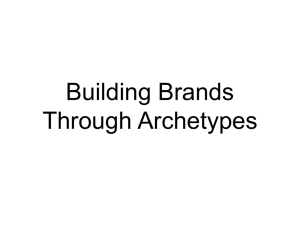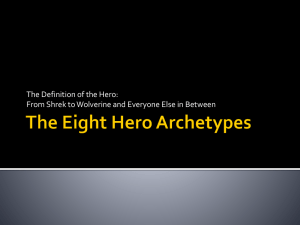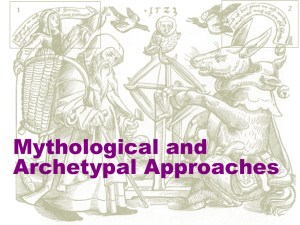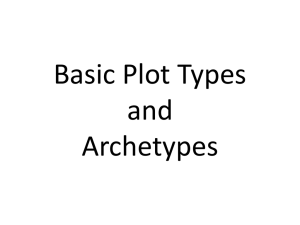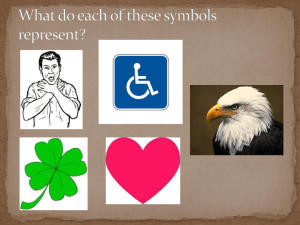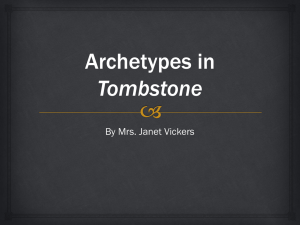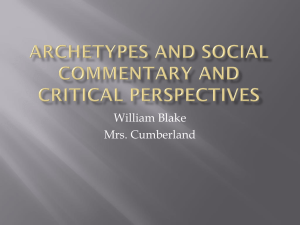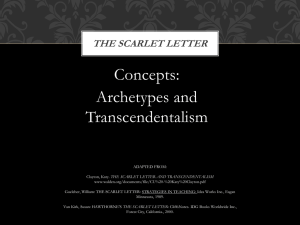JUNG - The Richmond Philosophy Pages
advertisement
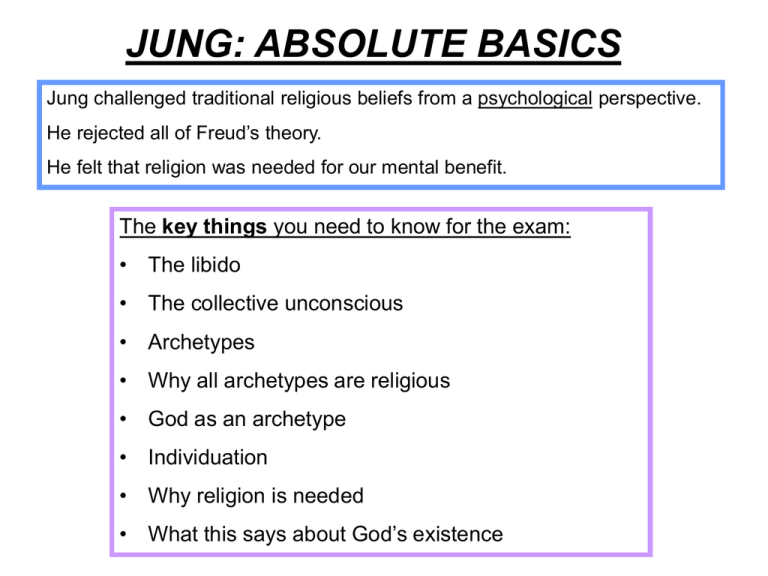
JUNG: ABSOLUTE BASICS Jung challenged traditional religious beliefs from a psychological perspective. He rejected all of Freud’s theory. He felt that religion was needed for our mental benefit. The key things you need to know for the exam: • The libido • The collective unconscious • Archetypes • Why all archetypes are religious • God as an archetype • Individuation • Why religion is needed • What this says about God’s existence Definitions to revise: • The libido – the source of psychic energy • The collective unconscious – part of the unconscious that contains inaccessible archetypes • Archetypes – the innate source of psychic images • The God archetype – produces images of wholeness • The Self archetype – produces images of wholeness • Individuation – process of becoming mentally balanced • Numinous – a religious experience where you feel the presence of something greater than you THE LIBIDO •The libido is the source of psychic (mental) energy. •If the flow of this psychic energy is interrupted, we become psychically imbalanced. •This is how neuroses (mental illness) results. •He discovered this by working with schizophrenic patients. THE COLLECTIVE UNCONSCIOUS By studying the similarities between images in dreams, Jung said there were two parts to the unconscious mind: the personal unconscious and the collective unconscious. The Conscious = thoughts we are aware of. Personal Unconscious = things contained here come from the experience of our environment. These things are thoughts, feelings and urges that are difficult to bring to our conscious and that we may repress. Collective Unconscious = Things contained here are inherited. The things found here are the archetypes: the innate (with you from birth) source of mental images. ARCHETYPES Archetypes are: •The inherited source of mental images. •The part of the mind that creates primordial images (the first, most basic images in our mind). •We are all born with the same archetypes in our minds so that’s why we have similar mental images (in dreams etc) •The archetypes are blueprints for our personality – they influence how we perceive things and how we behave. An example of an archetype is ‘The Persona’ – this is the aspect of our personality where we put up a front to cover our true natures (e.g. because we are shy or nervous) In dreams, ‘The Persona’ archetype produces the mental image of us wearing a coat of armour – the armour is symbolic of us trying to shield our true selves. WHY ALL ARCHETYPES ARE RELIGIOUS All archetypes are religious. This is because Jung defines ‘religion’ and ‘religious’ in terms of ‘the numinous’. What does that mean? A numinous experience is a religious experience of there being something greater than you. e.g. when you’re in a cathedral and you feel a kind of awe and spirituality affect you. Jung thinks all archetypes are religious (or numinous) because they affect our conscious (we experience them) even though they are external to our will (they are in a separate, inaccessible part of the mind – the collective unconscious). So, like the numinous, something outside of us affects us. The archetypes being that thing since they are in a part of our mind that we can’t access; hence them being ‘outside’ of us. GOD AS AN ARCHETYPE There is a ‘God’ archetype which we are all born with. This produces mental images that we take to be ‘religious’ images. These images are images of wholeness (since God is supposed to be the most perfect, whole, entity possible). INDIVIDUATION Individuation is the process that keeps us psychically (or mentally) balanced. All features of our personality need to be balanced. This means we need a balance between our different archetypes. If we don’t keep this balance it will result in a neurosis (mental illness). The process is: 1. First we come to terms with the outer environment – work, friendships, relationships etc. 2. A middle age we look inwards - we need to come to terms with our own personality. Think about a ‘mid-life crisis’ when people do stupid things like buy sports cars, its because they are having to come to terms with the realisation that the doors of opportunity are closing for them. They need to find new purpose in life and that’s why they eventually look inwards at who they really are. WHY RELIGION IS NEEDED • To complete individuation, we need to accept all the different parts of our personality (whether we like them or not e.g. fear of death). • This means we need to accept all of our archetypes. Individuation is a religious process, because: 1. It is guided by ‘The Self’ archetype – and all archetypes are religious. 2. ‘The Self’ aids the process of individuation by generating images of wholeness. • One of the best images of wholeness are the religious images of God. • So, the images created by The Self are the same as those images created by the ‘God’ archetype. • Therefore it is through religious images (images of wholeness) that the personality achieves its goal of integrating all it’s different parts. • It is through religious images that we become psychically balanced. This mandala is also an image of wholeness. Notice how all the different shapes work together to create a perfect circle. Images of wholeness are therefore great ways of describing the individuated mind since all the different parts of the mind are working together to create a whole person. It’s the balance of the archetypes that create a psychically balanced person. Religious images are images of wholeness. Therefore religious images help the individuation process. Which helps us to become psychically balanced people. WHAT THIS SAYS ABOUT GOD’S EXISTENCE Jung, like Freud, says his theory offers no proof of whether God does or does not exist. We don’t know where the archetypes originally came from, just like we don’t know about the origin of the mind. But it can be said, according to Jung’s theory, that God and religion exist as a psychic reality: meaning for those who experience the effect of the archetypes, God is real. This challenges the traditional concept of God and religion since traditional believers feel that God created the universe and we will be with him if we go to heaven. With Jung, at best, God exists in our minds – not as the traditional Judeo-Christian God (a being with great powers etc) but as an archetype.
